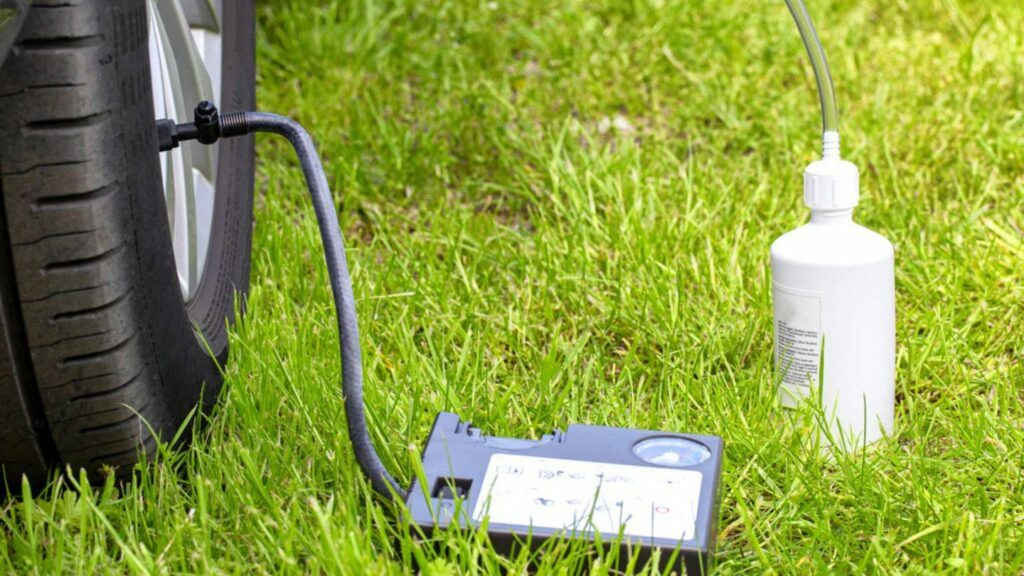What is Wheel Balancing? : Unlocking the Secret to Smooth Rides
Wheel balancing is a standard automobile maintenance procedure that adjusts the angles of the wheels to the car manufacturer’s specifications. This reduces tire wear and ensures straight and true vehicle travel. Proper wheel balancing leads to a smoother ride, less tire wear, and reduced strain on the drivetrain. Uneven tire wear, vibrations in the steering wheel or floorboard, and poor fuel economy are signs that your wheels may need balancing. Tire balancing is different from wheel alignment, as balancing corrects weight imbalances on tire and wheel assemblies, while alignment corrects the angles of the tires to optimize contact with the road. Driving with unbalanced tires can be dangerous and cause significant wear. Understanding The Science Behind A Smooth Ride When it comes to vehicle maintenance, wheel balancing plays a crucial role in ensuring a smooth and comfortable ride. As you drive down the road, your wheels spin at high speeds, and any imbalance in weight can lead to unpleasant vibrations and even tire wear. In this section, we will explore the science behind wheel balancing and how it contributes to a smooth ride. The Role Of Wheel Balancing In Vehicle Maintenance Wheel balancing is a process that involves equalizing the weight distribution of a tire and wheel assembly. This is achieved by carefully placing small weights on the rim of the wheel to counterbalance any heavy spots. By doing so, wheel balancing minimizes vibrations that can be felt through the steering wheel, floorboard, or even the seat. How It Ensures A Smooth And Comfortable Ride A properly balanced wheel assembly ensures that the weight is evenly distributed around the tire. This balance enables the tire to rotate smoothly and eliminates any disturbances caused by uneven weight distribution. When the tire spins without any wobble or vibrations, it enhances your driving experience by providing a smooth and comfortable ride. The Importance Of Proper Weight Distribution Proper weight distribution is key to achieving a balanced wheel assembly. Each wheel must carry an even amount of weight to prevent any imbalance. Imbalances can occur due to various factors such as uneven tire wear, tread depth differences, and even manufacturing variations in both the tire and wheel. Through the process of wheel balancing, these imbalances are corrected, ensuring that each wheel carries its fair share of weight. This prevents excessive strain on specific parts of the tire and drivetrain, leading to reduced tire wear and improved overall vehicle performance. Ensuring Each H3 Heading Adheres To Html Syntax To adhere to HTML syntax, the H3 headings are enclosed within tags. This ensures that the headings are formatted correctly for web display. Signs Of Wheel Imbalance No matter how well-maintained your vehicle is, over time, the wheels can become unbalanced. Wheel imbalance occurs when there is an uneven distribution of weight around the tire and rim, causing vibrations and other issues. It is important to identify these signs of wheel imbalance to ensure a safe and smooth ride. Let’s take a closer look at some common symptoms of unbalanced wheels: Identifying Vibrations And Uneven Tire Wear One of the most noticeable signs of wheel imbalance is vibrations felt while driving. These vibrations can be felt in the steering wheel, floorboard, or even the seat. If you notice a shaking sensation that increases as you accelerate, it is likely that your wheels are out of balance. Additionally, another sign of wheel imbalance is uneven tire wear. If you notice that certain areas of your tires are wearing down faster than others, it is a clear indication that your wheels are not properly balanced. Effects On Steering Control And Handling Wheel imbalance can have a significant effect on your vehicle’s steering control and handling. When the wheels are not balanced, it can cause your vehicle to pull to one side or make it more difficult to keep a straight line. This can be particularly dangerous when driving at higher speeds, as it can affect your ability to control the vehicle. If you notice any changes in your vehicle’s handling or steering, it is essential to get your wheels balanced as soon as possible. Common Symptoms Of Unbalanced Wheels In addition to vibrations and effects on steering control, there are several other common symptoms of unbalanced wheels. These include: A vibrating or shaking steering wheel An increase in fuel consumption Noisy or rough rides Uneven tire wear Excessive wear on suspension components Unusual noises coming from the wheels or tires It is important to be aware of these symptoms and address any wheel imbalance issues promptly to avoid further damage to your vehicle and ensure your safety on the road. How Wheel Balancing Works When it comes to wheel balancing, it is an essential aspect of maintaining a smooth and safe driving experience. Over time, wheels can become unbalanced due to various factors such as tire wear, weight distribution, and even road conditions. Wheel balancing involves equalizing the weight distribution around the entire wheel and tire assembly, ensuring that each tire rotates smoothly without any vibration or wobbling. This not only improves the overall performance of the vehicle but also extends the lifespan of the tires. Explaining The Process Of Wheel Balancing Wheel balancing is a precise procedure that requires professional knowledge and specialized equipment. The process typically involves the following steps: Inspection: The technician inspects the tires and wheels for any visible damage or signs of uneven wear. Mounting: The wheel and tire assembly is mounted onto a balancing machine, which detects any imbalances. Weight Placement: Based on the imbalances detected, the technician strategically places small wheel weights onto the rim of the wheel. These weights counterbalance the uneven weight distribution. Recheck: After the weights have been placed, the machine is used again to verify that the wheel is now properly balanced. Adjustment: If any additional adjustments are needed, the technician repeats the process until the wheel is perfectly balanced. Role Of Wheel Weights In Balancing Wheel weights play a crucial role in the balancing process. These
What is Wheel Balancing? : Unlocking the Secret to Smooth Rides Read More »





